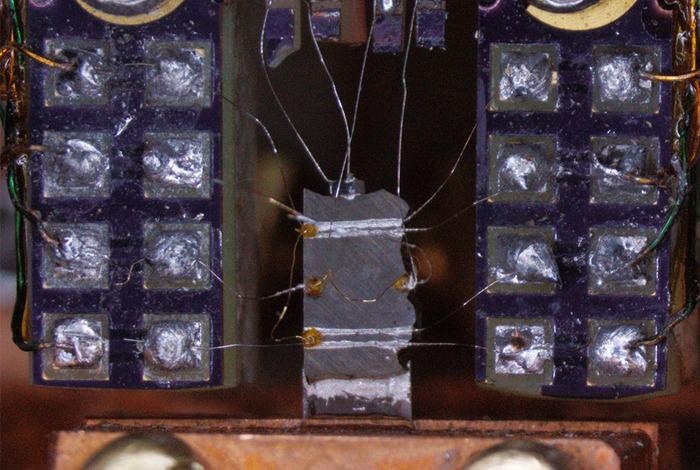Mar 29 2021
A new study has shown that a magnetic uranium compound can exhibit powerful thermoelectric properties, thereby producing four times the transverse voltage from heat compared to the previous record in a cobalt-manganese-gallium compound.
 Research published in Science Advances has found that large spin-orbit coupling and strong electronic correlations in a system of uranium-cobalt-aluminum doped with ruthenium resulted in a colossal anomalous Nernst conductivity. Uranium and actinide alloys are promising materials to study the interplay among a material’s topology and strong electron correlations, which could someday have applications in quantum information technologies. Image Credit: Los Alamos National Laboratory.
Research published in Science Advances has found that large spin-orbit coupling and strong electronic correlations in a system of uranium-cobalt-aluminum doped with ruthenium resulted in a colossal anomalous Nernst conductivity. Uranium and actinide alloys are promising materials to study the interplay among a material’s topology and strong electron correlations, which could someday have applications in quantum information technologies. Image Credit: Los Alamos National Laboratory.
The study findings open a new prospect for the actinide elements at the base of the periodic table and indicate a new direction in the study on topological quantum materials.
We found that the large spin-orbit coupling and strong electronic correlations in a system of uranium-cobalt-aluminum doped with ruthenium resulted in a colossal anomalous Nernst conductivity. It illustrates that uranium and actinide alloys are promising materials to study the interplay among a material’s topology and strong electron correlations.
Filip Ronning, Study Lead Investigator and Director of Institute for Materials Science, Los Alamos National Laboratory
“We’re very much interested in understanding, tuning and eventually controlling this interplay, so hopefully one day we can exploit some of these remarkable responses,” added Ronning, who is the lead investigator of the study published recently in the Science Advances journal.
The Nernst response arises when a material transforms heat flow into an electric voltage. This thermoelectric phenomenon can be utilized in devices that produce electricity from a heat source.
The most significant existing example is the radioisotope thermoelectric generators (RTGs) that were created partially at Los Alamos National Laboratory. RTGs utilize heat from the natural radioactive decay of plutonium-238 to produce electricity—one such RTG is now powering the Perseverance rover on Mars.
“What’s exciting is that this colossal anomalous Nernst effect appears to be due to the rich topology of the material. This topology is created by a large spin-orbit coupling, which is common in actinides,” explained Ronning.
One consequence of topology in metals is the generation of a transverse velocity, which can give rise to a Nernst response as we observe. It can also generate other effects such as novel surface states that may be useful in various quantum information technologies.
Filip Ronning, Study Lead Investigator and Director of Institute for Materials Science, Los Alamos National Laboratory
The uranium system investigated by the group of researchers from Los Alamos produced 23 μV/K of temperature change, which is four times larger compared to the previous record, which was found in a cobalt-manganese-gallium alloy a few years back and also attributed to such sorts of topological origins.
This study received financial support from the U.S. Department of Energy, Office of Science, Basic Energy Sciences, Materials, Los Alamos National Laboratory LDRD, and National Science Foundation.
Journal Reference:
Asaba, T., et al. (2021) Colossal anomalous Nernst effect in a correlated noncentrosymmetric kagome ferromagnet. Science Advances. doi.org/10.1126/sciadv.abf1467.